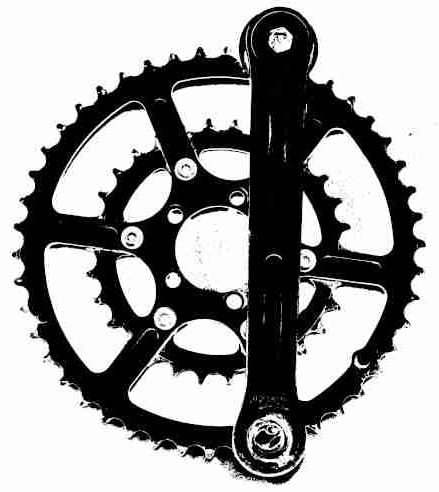Diagnosing Crank Wobble: 3 Common Causes
Wiggle in a bicycle crank is always a serious concern and should be diagnosed without delay. Riding with a wobbly crank is dangerous – the crank may fail under you and cause a crash. Ignoring the issue for too long may also leave you with a damaged crank or frame.
This article tells you how you can quickly diagnose and fix crank wobble. I wrote it to help you avoid a serious injury. Wiggle in the crank is usually caused by one of three mechanical issues: loose crank, loose bottom bracket or worn bottom bracket bearings. Each of these is relatively easy to fix – if you catch them early.
Next we take a look at these issues and finish with problems elsewhere that may appear to you like a wobble in the crank.
Cause 1: Crank loose on spindle
The number one cause of wobbly cranks is a loose connection between the crank and the crank spindle. This issue is more common with modern splined cranks than with older square-tapered ones.
Cranks being loose may be due to (a) insufficient axial pull of the crank onto the shaft, resulting in equal lateral play in both cranks or (b) low clamping force, resulting in wiggle in one crank (mostly).
Diagnosis: Wiggle the crank sideways. Keep your eye on the spindle and crank joint. If you see relative motion, the crank is not tight on the spindle.
How to fix it: Tighten the crank. This is done with a single axial pulling screw with some crank sets; others are first tensioned axially and then clamped with another screw.
Cause 2: Bottom bracket loose in frame
Another possible cause of sideways play in crank is a loose bottom bracket. Bottom bracket is the bearing assembly through which your crank spindle runs, and is either threaded or press-fit to the frame. Both attachments can become loose and introduce play into the whole crank assembly.
Diagnosis: Look at where the bottom bracket meets the frame as you wiggle the crank. If the BB moves and the frame does not, the BB is loose.
How to fix it: Remove cranks and tighten the bottom bracket. Note the high required tightening torque. Consider thread lock to prevent loosening.
Cause 3: Bottom bracket bearings worn
Play may be introduced to the cranks also through the bearings inside the bottom bracket being loose or worn. Most bottom bracket bearings are not intended to be serviced or adjusted so you will have to replace them.
Diagnosis: Verify that the crank is tightened on spindle. Pull and push on the crank along the spindle. If there is play, the bearings are most likely worn.
How to fix it: Replace the bearings. If you have an older cartridge bottom bracket (square taper), you need to replace the entire BB. If you have a more recent model, you can often replace just the bearings.
Cause 4: It’s the really chainring/pedal
If none of the three causes above seemed to explain the wobble, chances are it was not the crank. Check the chainring and pedal – they may have given you the visual or tactile cue that something’s out of true/loose.
Diagnosis: Lift the chain off the chainrings. Spin the cranks fast with one finger and check if the chainring runs straight or not. Wiggle means it’s bent or loose. Also check for cracks in the chainring. Pedal: grab the pedal and twist it in all directions. Play means you have loose or worn bearings; if there is movement in the pedal shaft, the pedal is loose in the crank.
How to fix it: Tighten chainring bolts and pedal into crank. (Note the high torque for pedal.) Straighten the chainring if bent and replace if cracked. Tighten the pedal nut; if play persists replace the bearings.
Other checks
While you are inspecting the cranks, it is worth it to make a few extra safety checks.
First, check the cranks for hairline cracks. Such cracks may be produced through metal fatigue. While the would not likely cause any wiggle, they may cause a sudden crank failure and lead to injury. (I have fatigued three sets of cranks but spotted the cracks before failure.)
Most hairline cracks should be visible under bright light. Particular trouble spots are the crank root and the pedal eyelet.
Second, check the chainrings for similar cracks. While not quite as dangerous as those in cranks, hairline cracks in chainrings may also lead to hazardous failure under load.


